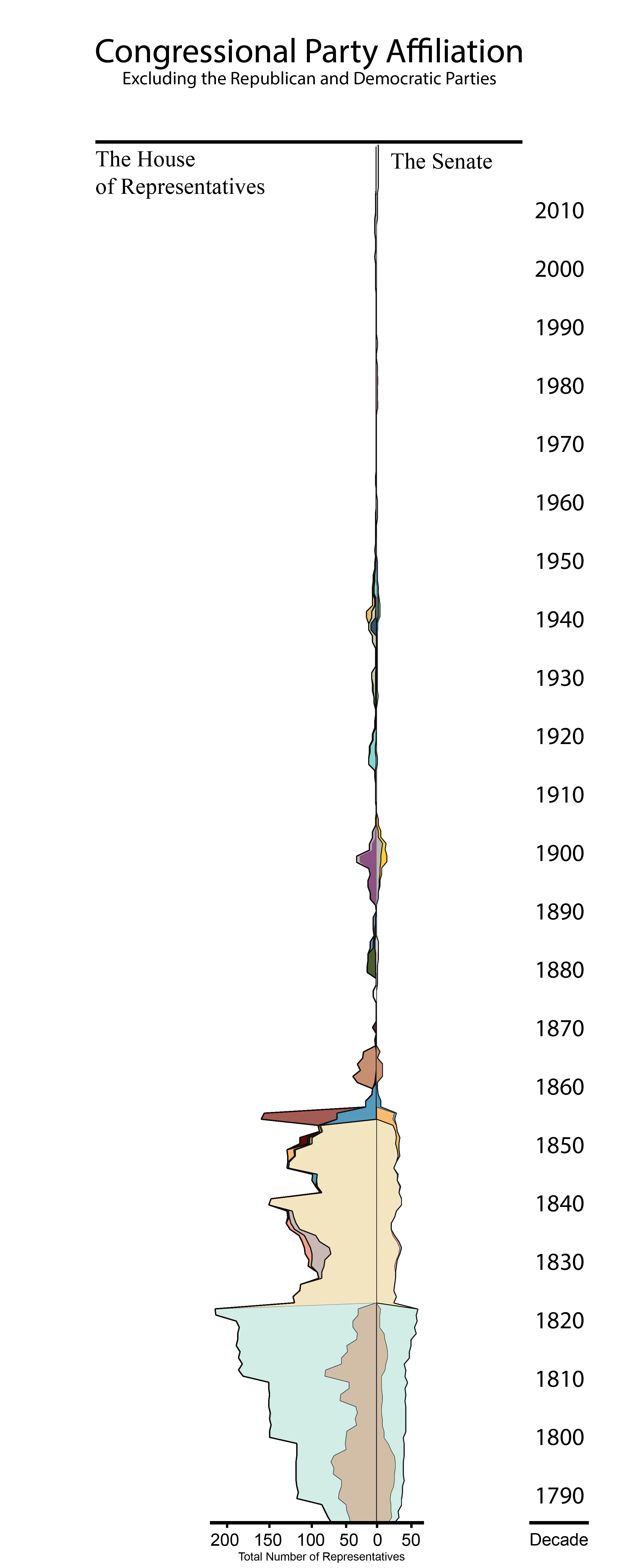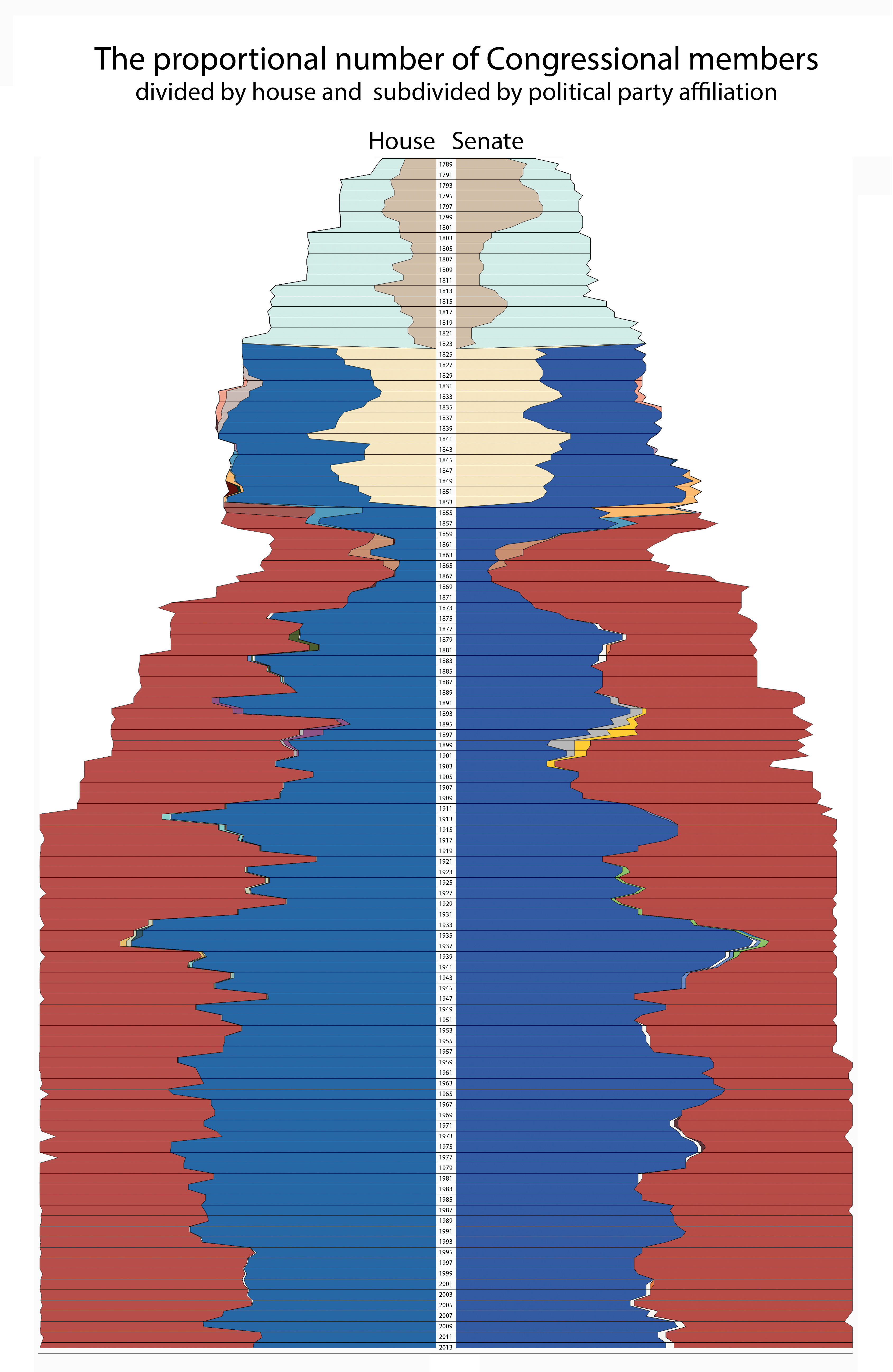
The United States is a two-party in as much as the majority of the political power is split between two political parties, however, the nation is not exclusively a two-party system, diverse third-parties -- minority parties -- have been active through the nation's history.
After its inception, The United States was a true two-party system, for the first 30 years. The Federalists and the Democratic-Republicans, led by Alexander Hamilton and Thomas Jefferson respectively, dominatated the American political ecosystem. These parties split over constitutional interpretation and the relationship of the Federal goverment to state governments.
By the 1820s political power shifted toward two newly formed parties, the Democrats and the National Republicans; the National Republicans latter gave way to the Whig Party. By the mid 1850s the Republican Party gained a prominant position in the political system, thereafter, the political idenity of Congressional members looks similar to the modern day, with the majority of political power shifting between the Republicans and the Democrats.


Findings From The Visualization
After the death of the Federalists and the Democratic-Reuplicans, party affiliation becomes much more diverse, even more than is seen today. While third parties are not unknown in modern American politics they are far deminished than what thirdy parties have been historically. For example, in the 1800s it was common to have a multiplicity of minority parties while today only the label "Independant" is given to Congressmen who don't idenify with either majority party.
Also, more third parties are found in the House of Representatives than in the Senate, which can be creddited to the represenative nature of the House.
Why The Two-Party System?
While there are execptions the the two party system -- such as independant candidates and minority parties, it is no secret that the system is dominated by two partes.
Some political scientists say that the electoral process is to blame for the two-party system. Academics like Indiana University professor Marjorie Hershey cite Duverger's Law, a concept which "argues that plurality elections in single-member districts (and no runoff elections) tend to produce two-party systems."
"A single-member district means simply that one candidate is elected to each office, and a plurality election is one in which the candidate with the largest number of votes wins, even if not a majority," Hershey wrote.
Another explaination comes in the "main prize of American politics," the presidency. Some analysts argue that third parties are weakened because the exceutive is an individual and not a coalition.
"Because the presidency is so prominent in American politics, the argument, goes, it shapes the politics of the system as a whole," wrote Hershey. "Because minor parties have no chance of winning the presidency, they will not thrive."